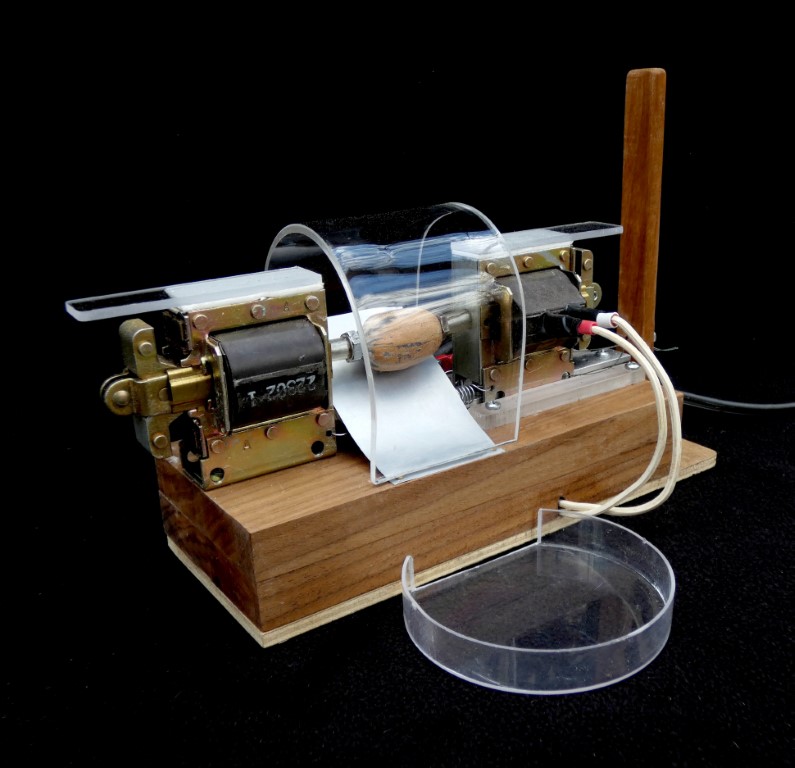So your Aunt Harriet brought you a big sack of pecans from her farm — awesome! Only one small catch: you get to shell them. No way are we going to do this manually with a “pliers” style nutcracker, right?
One alternative is to buy the legendary Texas Native nutcracker from Amazon or eBay for about $50. While this rubber band-powered relic from about 40 years ago does work, ask anyone who’s cracked more than a dozen pecans with it how long it took for their left thumb to heal.
There are several semi-automatic, one-pecan-at-a-time crackers on the market. All work using the same principle as the Texas Native: by bashing the pecan from one end, causing a weight at the other end to move a bit, with considerable resisting inertia. They can be bought for a paltry $200–$400 from vendors like Red Hill General Store. And you still have considerable follow-up picking to do.
The Pecan Blaster uses the same basic principle, but with two heavy-duty 115-volt appliance solenoids facing each other. Just load a pecan between the solenoids and close the clear protective shield to fire both solenoids simultaneously. The pecans don’t stand a chance when bashed from both ends. The left solenoid is fixed, but the right one slides to accommodate various size nuts* and kicks back somewhat, using the inertial weight principle of the old-style crackers. Both halves of the nut usually survive unscathed and separated from most of the shell; the rest of the time I get quarters and smaller pieces, which are fine for most baking or snacking purposes. Most cracks need no further shelling.
Here’s how you can build one like mine, but feel free to use alternate materials and slightly different measurements than what I chose.




